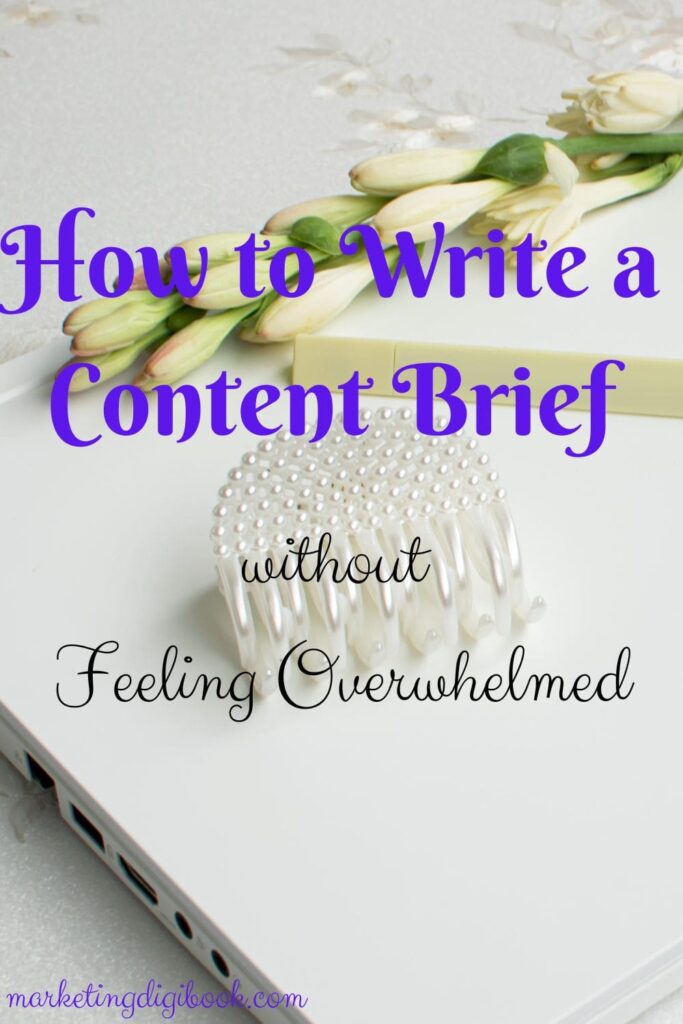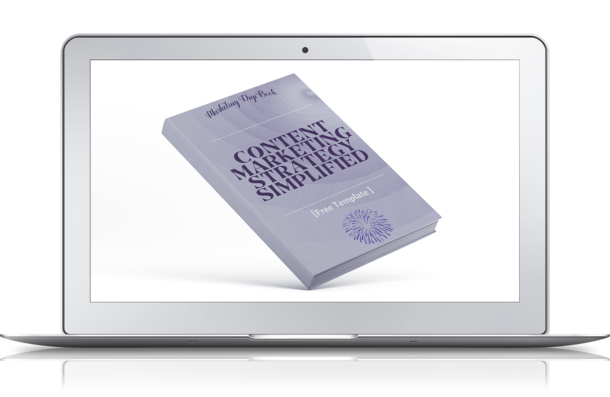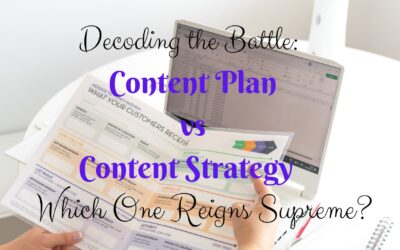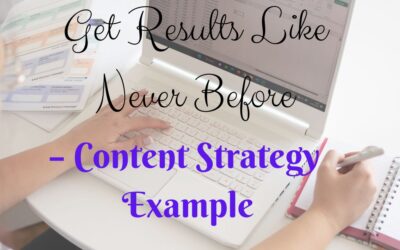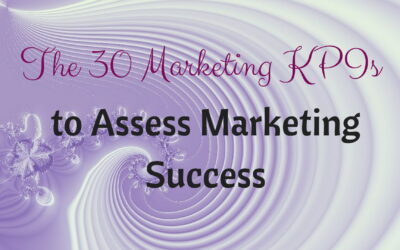Are you feeling overwhelmed when it comes to creating content briefs? Do you struggle to find a balance between providing enough information and not getting bogged down in the details? If so, you’re not alone.
Writing a content brief can be a daunting task, especially when you’re working on a tight deadline or managing multiple projects.
Reading this post will provide you with tips from the pros on how to conceive a content brief without feeling overwhelmed. We’ll break down the components of a content brief and provide you with a step-by-step guide on how to create one.
It’s understandable that the thought of writing briefs may seem intimidating, but it doesn’t have to be. Here is help to streamline your process, save time, and ultimately produce high-quality content that resonates with your target audience.
So, let’s begin the journey toward creating a content brief that not only meets your needs but exceeds your expectations.
Invest In Your Business
Your Content Strategy Doesn’t Deliver the Expected Results?
What Is a Content Brief?
A content brief is a document that shows how to write and what to include in a piece of content. It outlines the objectives, and parameters needed, the purpose of the content, the target audience, the key messages, and the outline that needs to be conveyed.
A content brief is the backbone of any content creation process, helping to keep everyone on the same page and ensuring that the crafted content is aligned with the marketing goals and objectives.
What Is an SEO Content Brief?
An SEO content brief is similar to a content brief but with an added focus on search engine optimization (SEO). An SEO content brief not only indicates the objectives, and outline of the project but also includes specific instructions and guidelines for optimizing the content for search engines. It might include:
- Keyword research
- On-page optimization
- Interlinking strategies
- Meta tags
The main difference between a content brief and an SEO content brief is made of the optimization parameters.
Why Are Content Briefs Important?
Creating a content brief is crucial for an effective content creation process. Without a clear plan in place, it’s easy to get lost in the weeds and lose sight of the overall goals and objectives of the project.
A content brief offers the necessary guidance and helps to keep everyone on the same page.
In the context of marketing, a good example of the importance of a content brief can be seen in the creation of a blog post.
Let’s say that a company wants to create a blog post about a new product they are launching. Before they start creating the piece of content, they should develop a content brief that outlines the following:
- The target audience for the content (potential customers).
- Key messages that need to be conveyed (benefits and features of the product).
- Main keyword and semantic terms that should be included in the content (e.g. the name of the product, related search terms, etc.)
- The desired outcome of the content (increased awareness and interest in the product, potential sales)
With this content brief in place, the company can then start creating content that is targeted toward their desired audience and optimized for search engines.
By following the guidelines outlined in the content brief, they increase the likelihood that their content will be discovered by search engines and, ultimately, by potential customers.
Advantages of Using Content Briefs
One of the main advantages of using content briefs is that they can prevent the need for rewrites and repetitive revisions. By having a clear plan in place before starting the content creation process, teams can avoid costly mistakes and minimize the need for time-consuming revisions.
This saves time and money and allows teams to focus on more important tasks.
Research conducted by Ziflow found that more than half of the marketing teams review an asset three to five times before it is considered final.
Another advantage of using content briefs is ensuring no critical information and data are missing. When creating content, it’s easy to overlook important details that can make or break the success of the project.
Content briefs help ensure that all necessary information is included and that the content meets the buyer persona’s needs.
In addition, content briefs provide a guideline and a single source of truth for the collaborating team. They serve as a reference document that everyone on the team can refer to when needed.
Consequently, minimizing confusion and misunderstandings, and helping to ensure that everyone is working towards the same goal.
Lastly, content briefs provide clear direction. They serve as a blueprint for the project, outlining the goals, audience, tone, and format. And ensure that the content meets the needs of the intended audience and is consistent with the overall marketing strategy.
It also provides a clear way to measure success and obtain approval from stakeholders.
What Are the Components of a Content Brief?
In order to create a comprehensive content brief, there are several key elements that need to be considered. The key components of a content brief are
- Topic and working title
- Target buyer persona
- Primary keyword
- Search Intent for that keyword
- Secondary keywords and LSis
- Content format, and length
- Stage of the buyer journey
- Content goals and objectives
- Content structure and outline
- Content tone and style, and instructions for visuals
- Resources
- Internal links
- Call to action (CTA)
- Deadlines and milestones
Content brief template
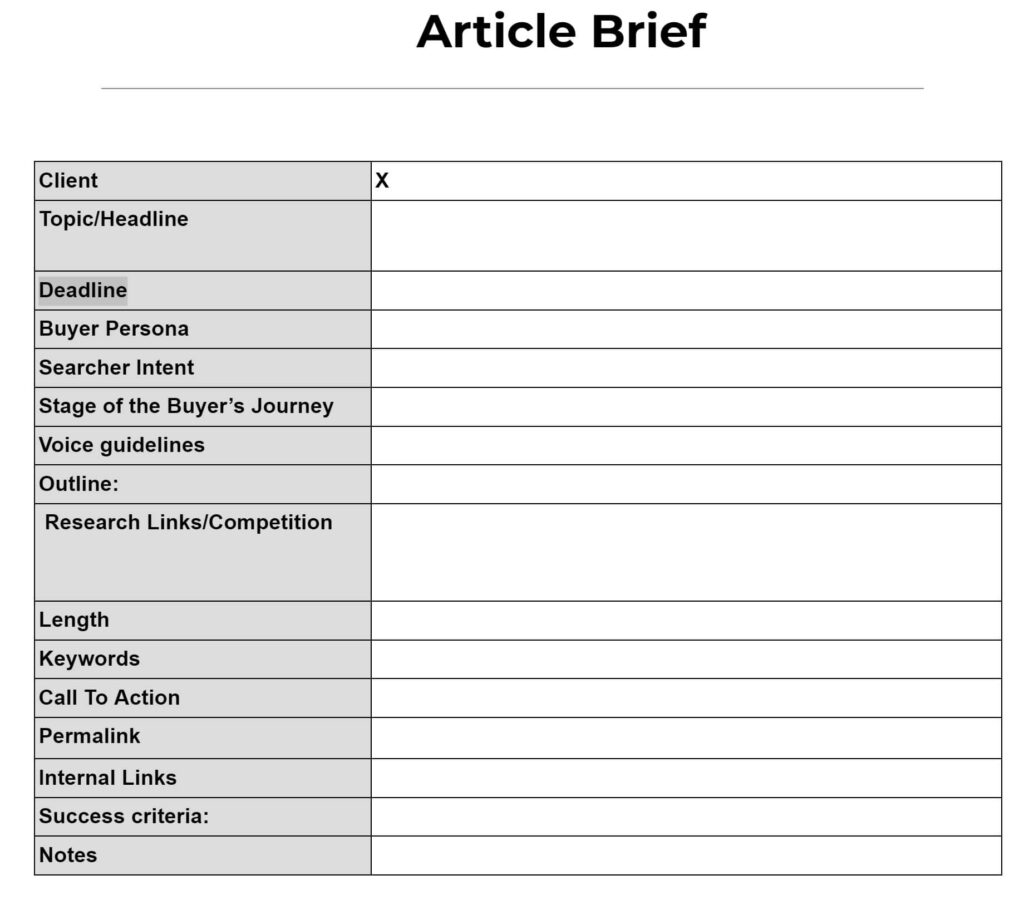
Content brief example
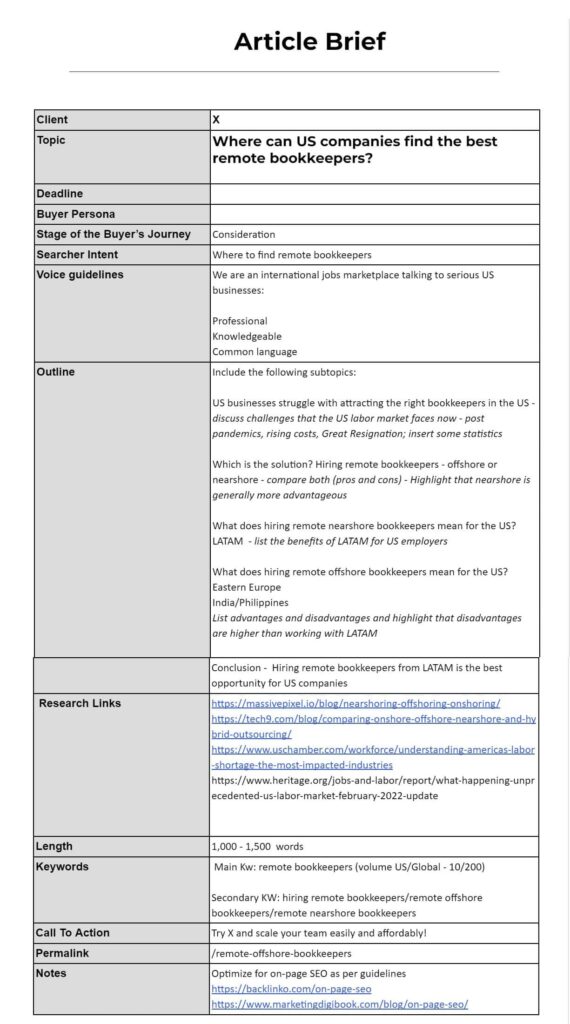
What Are the Steps for Creating a Content Brief?
To create a detailed content brief follow the next steps:
Identify the Target Audience – Overview of the Buyer Persona
The target audience is the group of people that you are creating the content for or your buyer persona. It is defined based on demographics, psychographics, or other factors.
Understanding your target audience is essential to creating effective content that resonates with them.
Example: If the target audience is working moms, the buyer persona may include information such as their age range, occupation, income level, and the challenges they face balancing work and family life. In your brief, you will include a reference as “Mom Mary” and a link to the buyer persona profile.
Execute a Keyword Research – Identify the Primary Keyword and LSIs
The primary keyword is the main keyword that you are targeting with your content. This keyword should be relevant to your target audience’s needs and should be included in the content in a natural and organic way.
LSIs (Latent Semantic Indexing) are related keywords and phrases that are also relevant to the topic of your content. Including LSIs can help to improve the relevance of your content and increase its visibility in search results.
Example: If the content is about time-saving tips for working moms, relevant keywords may include “working mom struggles,” “time management,” and “productivity hacks”. And LSIs for “working mom struggles” could be “working mom dilemma”, “ depressed overwhelmed working mom”, “challenges of working moms”.
Brainstorm Content Topic and SEO Title
The topic of your content should be based on your target audience’s needs and interests and related to your product/service.
Deciding on a relevant, optimized, and eye-catching title is not that easy. Bear in mind that the working title should be attention-grabbing and provide a clear idea of what the content is about.
It is important to keep in mind that the title is often the first thing that people will see, and based on it, they decide if they click on your article or not.
Example: If the target audience is working moms, topics may include time-saving tips, career development, or self-care. Working titles may include “10 Time-Saving Hacks for Busy Working Moms” or “How to Advance Your Career While Juggling Motherhood.”
Determine the Content Format and Length
The format and length of your content can have a significant impact on how it is received by your target audience.
Depending on the topic approached the format may be a listicle, a how-to, a guide, an ebook, etc.
Content length in words is also important. Usually, you want this content to be useful for your audience and rank in search engines. The word count should be in the range of already ranking articles and should cover the topic in depth.
Example: If the goal of the content is to drive conversions, a product comparison guide may be the most effective format of content. The angle of the content may be based on a trending topic or a pain point that the target audience is experiencing.
Establish the Stage of the Buyer Journey for the Piece of Content
The stage of the buyer journey that your target audience is in will influence the type of content that they are looking for.
For example, someone in the awareness stage may be looking for educational content, while someone in the decision stage may be looking for product comparisons. By understanding the stage of the buyer journey, you can create content that is tailored to their needs and more likely to convert.
Define Content Goals and Objectives
The goals and objectives of your content should align with your overall marketing goals.
For example, if your goal is to increase brand awareness, your content may focus on spreading the word about your product or services or sharing customer success stories.
By aligning your content goals and objectives with your overall marketing goals, you can create a more cohesive and effective content strategy.
Example: If the goal of the content is to generate leads, the objective may be to collect email addresses through a lead magnet.
Indicate the Content Tone and Style
The tone and style of your content should reflect your brand voice and values. This can vary depending on your target audience and the type of content that you are creating.
For example, a piece of content aimed at millennials may have a more casual tone and use humor, while a piece of content aimed at business executives may have a more formal tone and use data-driven insights.
Example: If the target audience is working moms, the tone may be empathetic and understanding
Determine the Search Intent Behind the Main Keyword
Search intent refers to the reason behind a search query. Understanding the search intent behind your target audience’s queries is crucial in creating content that matches their needs.
By understanding the search intent, you can create content that is more relevant to their needs and more likely to be found in search results.
Create the Content Structure and Outline
The structure and outline of your content should be based on the type of content and the goals that you have set. It may include headings, subheadings, bullet points, or other formatting elements.
The provided outline should be logical and easy to follow and should help to guide the reader through the content.
Example: Suppose the goal of the content is to inform the audience about the importance of a healthy lifestyle. In that case, the structure and outline of the content should include subtopics such as nutrition, exercise, stress management, and sleep.
List the Resources
Resources are an essential component of a content brief. It is crucial to specify the resources needed to create the content. Resources include anything that the content writer needs to successfully complete the project.
This can range from research materials, case studies, statistics, images, videos, or any other type of media. Or competitor articles. By specifying the resources, the content creator can plan and allocate sufficient time to organize them and extract the right information.
When creating product pages or other landing pages, or infographics, it’s useful to indicate a design mockup or at least similar examples.
Additionally, this helps to avoid unnecessary delays and reduces the risk of missing essential data.
Example: Suppose the content is about the benefits of a plant-based diet. The resources that need to be reviewed may include scientific studies, books, and online articles from authoritative sources on the topic.
strategy templateDetermine the Call to Action (CTA) That Will Be included in the Content
A call to action (CTA) is another important component of a content brief. The CTA informs the reader of what action they should take after engaging with the content.
For example, a CTA could be encouraging the reader to subscribe to a newsletter, purchase a product or service, or schedule a consultation.
By including a CTA in the content brief, content creators ensure that their content has a clear and specific purpose that aligns with the brand’s overall marketing strategy. Moreover, a well-crafted CTA can help improve conversions.
Example: Suppose the call to action for the content is to sign up for a free trial of a meal planning service. The content should include a link to the trial sign-up page and clear instructions on how to sign up.
Establish the Deadlines
Deadlines are the final essential component of a content brief. A deadline refers to the date and time when the content must be completed and delivered. Including deadlines in a content brief is vital as it helps to keep the project on track and within the specified timeline.
By specifying a deadline, content creators have a clear understanding of when the project should be completed, allowing them to manage their time effectively. Additionally, deadlines ensure that all stakeholders involved in the project are aware of the delivery date, minimizing the risk of delays and missed opportunities.
It is essential to consider each component of a content brief to create effective content. Neglecting any of the essential components can result in content that fails to meet its objectives.
For example, if a CTA is not specified in the brief, the content may lack direction, and the audience may not know what action to take after consuming the content.
Similarly, if resources are not adequately indicated, the content may be incomplete or lacking vital information. Finally, failing to set a deadline for content delivery can lead to delays, missed opportunities, and unhappy clients.
Now, you have heard for sure that content briefs can be generated by AI-driven tools. There are plenty out there. In my experience, none of them delivers great results, but help speed up the process and reduce the time needed for creating a solid content brief.
Key Differences Between a Manual Content Brief and an AI-Generated Content Brief
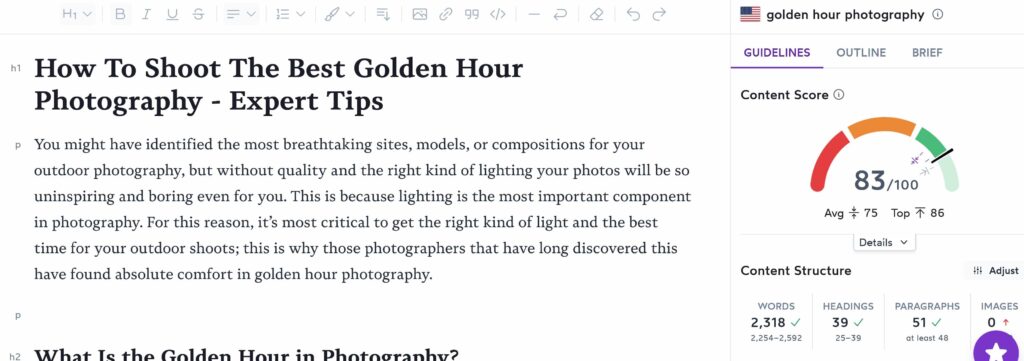
- Manual briefs rely on human input and creativity to develop customized briefs, while AI-generated briefs use algorithms and data analysis to develop a brief based on predetermined criteria.
- The manual approach offers greater flexibility and adaptability to changing project needs, while AI-generated briefs may be more rigid and difficult to modify.
- Manual briefs allow for more nuanced messaging and tone, while AI-generated briefs rely more heavily on keyword optimization and data analysis.
- Even though they are not as highly qualitative as manual briefs, AI-generated briefs can be developed more efficiently and are useful when producing content at scale. Executing them manually requires more time and resources to develop due to the need for human input.
- Manual briefs are better suited for complex projects that require human expertise and creativity, while AI-generated briefs may be more suitable for standardized or routine content creation tasks.
Finally
Creating a content brief doesn’t have to be overwhelming. By breaking it down into manageable steps, and focusing on your target audience and marketing goals, you can create a clear and concise brief that will help you achieve your marketing objectives. So go ahead, give it a try, and don’t forget to celebrate your successes along the way!
